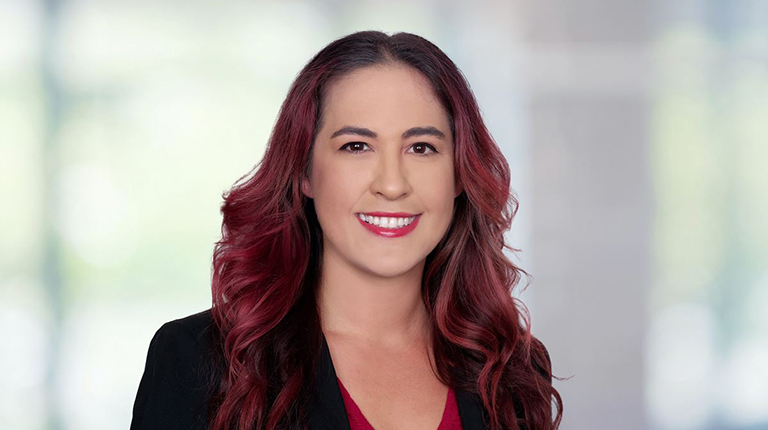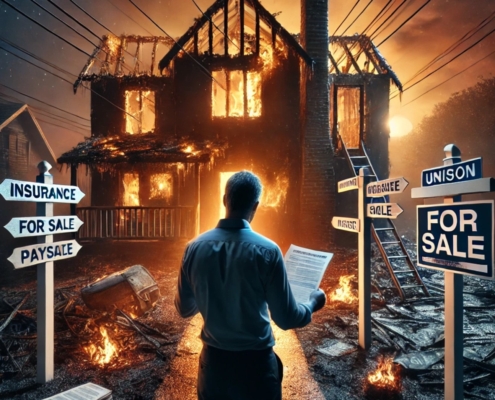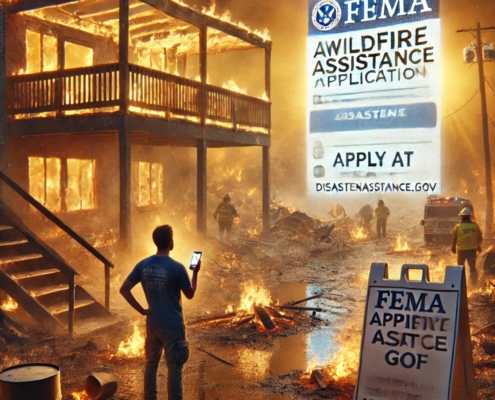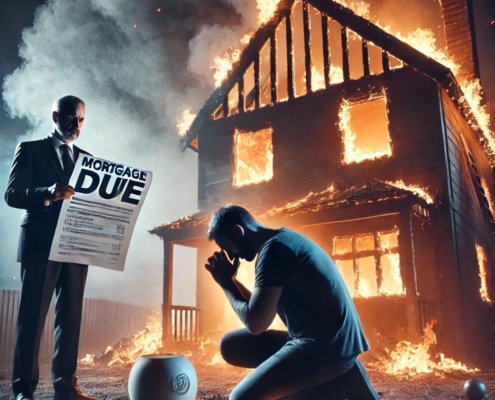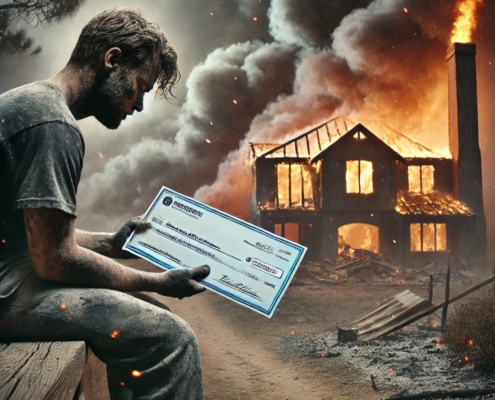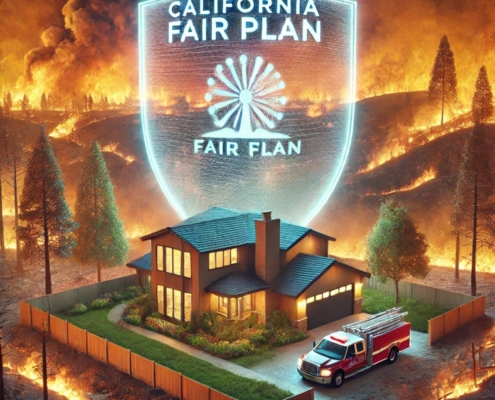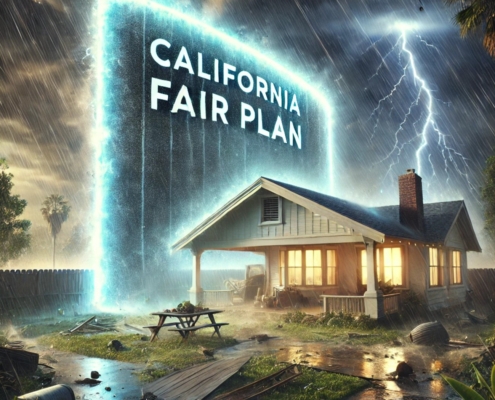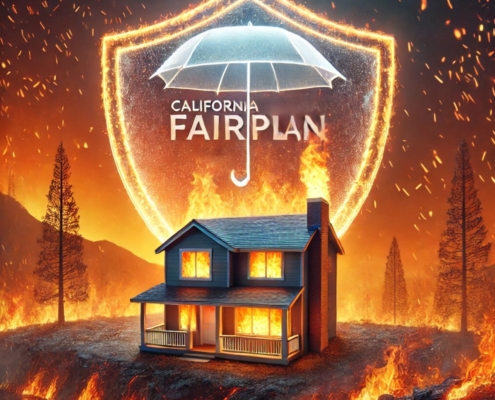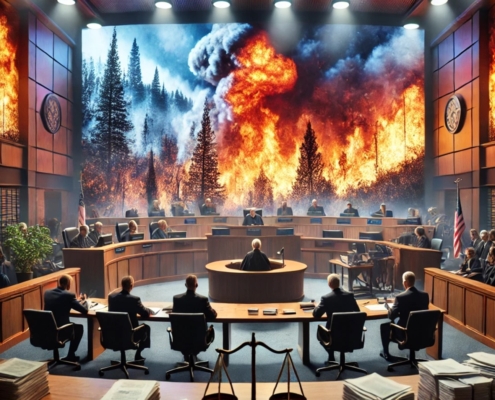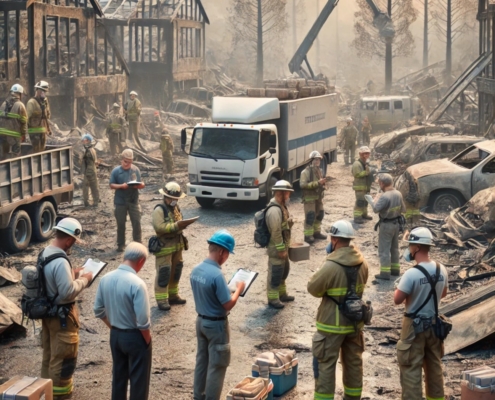General Information About FEMA Assistance
What is FEMA assistance?
FEMA’s Individuals and Households Program (IHP) offers financial help and direct services to eligible individuals and households who have necessary expenses and serious needs if they are unable to meet these needs through other means. This assistance can include funds for temporary housing, home repairs, and other disaster-related expenses.
Is FEMA assistance a loan or free?
FEMA provides grants through its IHP, which do not need to be repaid. These grants are intended to help with basic, critical needs and are not a substitute for insurance. Additionally, the U.S. Small Business Administration (SBA) offers low-interest disaster loans to homeowners, renters, and businesses to repair or replace damaged property. While SBA loans must be repaid, FEMA grants do not.
How does FEMA decide who gets money?
Eligibility for FEMA assistance is determined based on several factors:
- Residency: Applicants must reside in a federally declared disaster area.
- Citizenship Status: Applicants must be U.S. citizens, non-citizen nationals, or qualified aliens.
- Insurance Coverage: FEMA cannot duplicate benefits from insurance or other sources. Applicants must provide information about their insurance coverage and may need to submit documentation showing the settlement or denial of their insurance claim.
- Disaster-Related Needs: Assistance is provided for necessary expenses and serious needs directly caused by the disaster.
What can FEMA pay for?
FEMA’s IHP may provide assistance for:
- Temporary Housing: Funds for renting a place to live if a disaster makes your home uninhabitable.
- Home Repairs: Financial assistance for homeowners to repair uninsured or underinsured disaster-related damages to their primary residence.
- Other Needs Assistance: Grants for necessary expenses and serious needs caused by the disaster, which may include personal property, childcare, medical and dental expenses, funeral and burial costs, and transportation.
What does FEMA not cover?
FEMA assistance is not intended to restore your damaged property to its condition before the disaster. It does not cover:
- Non-Essential Items: Such as cosmetics or entertainment equipment.
- Business Losses: These are typically addressed by SBA disaster loans.
- Secondary Residences: Damage to vacation homes is not eligible; assistance is only for primary residences.
- Expenses Covered by Insurance: FEMA cannot duplicate benefits provided by insurance or other sources.
What kind of damage does FEMA cover?
FEMA covers damage that affects the habitability and functionality of a primary residence. This includes structural damage, utilities, and essential appliances. However, assistance is limited to making the home safe, sanitary, and functional; it does not cover non-essential features or cosmetic repairs.
What is the maximum FEMA will pay?
As of the latest information, the maximum grant amount for FEMA’s IHP is $43,600 per household. This cap is adjusted annually based on the Consumer Price Index. It’s important to note that this amount is not guaranteed and depends on the verified losses and needs of the applicant.
What is the maximum FEMA disaster assistance?
The maximum amount of assistance available through FEMA’s Individuals and Households Program (IHP) is subject to change and is adjusted annually. As of the latest information, the cap is $43,600 per household. This limit encompasses all forms of assistance under IHP, including housing and other needs assistance. It’s important to note that this amount is not guaranteed and depends on the verified losses and needs of the applicant.
What are typical FEMA payouts?
Typical FEMA payouts vary widely based on the extent of damage and individual circumstances. While the maximum grant is $43,600, many recipients receive less, depending on their specific needs and the level of insurance coverage. FEMA assistance is designed to provide a safety net for essential needs and may not cover all disaster-related expenses.
What is the FEMA 80% rule?
The “FEMA 80% rule” refers to the requirement that at least 80% of the funds provided for a specific project must be used for that project, with no more than 20% allowed for administrative and other costs. This rule ensures that the majority of federal assistance is directed toward actual disaster recovery efforts.
What is the 50% rule FEMA?
The “50% rule” is used by FEMA to determine whether a damaged structure should be repaired or replaced. If the cost to repair a structure exceeds 50% of the cost to replace it, FEMA may recommend replacement rather than repair. This assessment helps ensure the cost-effectiveness of federal assistance in the rebuilding process.
FEMA Wildfire Assistance Eligibility and Requirements
FEMA provides assistance to individuals and households affected by disasters, such as the January 2025 wildfires in Los Angeles. Understanding the eligibility criteria and application requirements is crucial for those seeking aid.
Who is eligible for FEMA assistance?
To qualify for FEMA’s Individuals and Households Program (IHP), applicants must meet the following conditions:
- Residency: The damaged property must be the applicant’s primary residence, located within a federally declared disaster area.
- Citizenship Status: Applicants must be U.S. citizens, non-citizen nationals, or qualified aliens. If an applicant does not meet these criteria, a minor child who is a U.S. citizen, non-citizen national, or qualified alien can be eligible on behalf of the household, with the adult as a co-applicant.
- Insurance Coverage: FEMA assistance cannot duplicate benefits from insurance or other sources. Applicants are required to file insurance claims and provide documentation of settlements or denials.
- Disaster-Related Needs: The assistance is intended for necessary expenses and serious needs directly caused by the disaster, which are not covered by insurance.
Who is not eligible for FEMA assistance?
Individuals may be deemed ineligible for FEMA assistance under the following circumstances:
- Non-Primary Residence: Damage to secondary or vacation homes is not covered.
- Non-Qualified Citizenship Status: Applicants who are not U.S. citizens, non-citizen nationals, or qualified aliens, and do not have an eligible minor child in the household, are ineligible.
- Insufficient Damage: If the home is deemed safe, sanitary, and functional, assistance may be denied.
- Failure to Provide Required Documentation: Not submitting necessary documents, such as proof of ownership or occupancy, can result in denial.
What is the income limit for FEMA disaster assistance?
FEMA assistance is not income-dependent; there is no specific income limit to qualify. However, applicants must demonstrate disaster-related expenses and unmet needs that are not covered by insurance or other sources.
What reasons will FEMA deny you?
Common reasons for FEMA denial include:
- Insurance Coverage: If losses are covered by insurance, FEMA will not provide duplicate assistance.
- Insufficient Damage: Determination that the home is habitable and does not require repairs.
- Lack of Required Documentation: Failure to submit necessary information, such as proof of identity, ownership, or occupancy.
- Missed Inspections: Inability to contact the applicant or conduct a home inspection.
Does FEMA ask for proof?
Yes, FEMA requires applicants to provide documentation to verify:
- Identity: Valid identification, such as a driver’s license or passport.
- Ownership: Proof that the applicant owns the damaged property.
- Occupancy: Evidence that the damaged property was the primary residence at the time of the disaster.
- Insurance: Information about coverage and any settlements or denials.
Does FEMA check your house?
FEMA may conduct inspections to assess disaster-related damage. An inspector will contact the applicant to schedule an appointment. The inspection helps determine the extent of damage and the types of assistance needed.
Do FEMA inspectors come inside?
Yes, FEMA inspectors typically need to enter the home to evaluate internal damage. Applicants or their authorized representatives must be present during the inspection. The inspector will assess both exterior and interior areas to document disaster-related damages.
Can FEMA come to your house without permission?
No, FEMA inspectors will not visit a property without prior contact and permission from the applicant. They will schedule an appointment and require the applicant or a designated representative to be present during the inspection.
What does a FEMA inspector look for?
During the inspection, a FEMA inspector assesses:
- Structural Damage: To the foundation, roof, walls, and other critical components.
- Utilities: Functionality of electrical, gas, water, and sewage systems.
- Major Appliances: Damage to essential appliances like refrigerators and stoves.
- Personal Property: Losses affecting necessary items such as clothing, furniture, and medical equipment.
The inspector documents damages to determine the scope of assistance required.
If you receive a denial letter from FEMA, it’s important to understand that it may not be a final decision. Often, providing additional information or documentation can address the issues leading to denial. Applicants have the right to appeal FEMA’s decision and should do so within 60 days of receiving the denial letter.
FEMA Wildfire Assistance Application Process
If you have been affected by the January 2025 wildfires in Los Angeles, various assistance programs are available to support your recovery. Here’s a comprehensive guide on how to apply for aid:
1. Applying for FEMA Assistance
The Federal Emergency Management Agency (FEMA) offers support to individuals impacted by disasters. To apply:
- Online: Visit DisasterAssistance.gov to submit your application.
- Phone: Call the FEMA Helpline at 1-800-621-3362. If you use a relay service, such as video relay (VRS) or captioned telephone (CTS), provide FEMA with your specific service number.
- In Person: FEMA has established Disaster Recovery Centers (DRCs) in Los Angeles County. At these centers, you can receive assistance with your application, speak with representatives from state and federal agencies, and get updates on your application status. For the latest locations and hours, refer to local news sources or official FEMA announcements.
2. Applying for Wildfire Assistance in California
In addition to FEMA, the California Governor’s Office of Emergency Services (Cal OES) coordinates state-level disaster assistance. To explore available programs:
- Visit: Cal OES
- Contact: Reach out to local government offices or community organizations for guidance on state-specific assistance programs.
3. Applying for the California Disaster Relief Fund
The California Disaster Relief Fund provides financial support to residents affected by disasters. To apply:
- Check Eligibility: Ensure you meet the criteria for assistance.
- Application Process: Visit the official website of the California Department of Social Services Disaster Services at cdss.ca.gov/disaster-services for detailed application instructions.
4. Understanding FEMA’s Critical Needs Assistance
FEMA offers a one-time payment to address immediate needs such as food, water, and personal hygiene items. As of October 1, 2024, the maximum amount for this assistance is $770 per household.
To apply:
- During FEMA Application: When completing your FEMA application, indicate that you have critical needs and request financial assistance.
- Eligibility: Applicants must provide identity verification and reside in a designated disaster area.
5. Clarifying Misconceptions About FEMA Payments
There has been misinformation suggesting that FEMA only provides a one-time payment of $750 to disaster survivors. In reality, this payment is part of the Critical Needs Assistance program and is not the sole form of aid available. Eligible individuals may qualify for additional assistance based on their specific circumstances.
6. Additional Resources
- FEMA Helpline: For questions or assistance with your application, call 1-800-621-3362.
- Disaster Recovery Centers: Visit local DRCs for in-person support. Locations can be found through local news outlets or official FEMA communications.
- Community Organizations: Nonprofits and local agencies often provide additional support and resources during disaster recovery.
Applying for disaster assistance can be a complex process, but multiple resources are available to guide you through each step. Ensure you provide accurate and complete information in your applications to facilitate timely assistance.
FEMA Assistance for Specific Needs
FEMA provides various forms of assistance to individuals affected by disasters, such as the January 2025 wildfires in Los Angeles. Here’s an overview addressing your specific questions:
How much does FEMA give for housing assistance?
FEMA’s Individuals and Households Program (IHP) offers financial assistance to eligible individuals and households affected by disasters. As of October 2024, the maximum amount of IHP financial assistance provided to an individual or household is $43,600 for housing assistance and $43,600 for other needs assistance, totaling $87,200.
How much does FEMA pay for home repair?
FEMA may provide financial assistance for homeowners to repair uninsured or underinsured disaster-related damages to their primary residence. The assistance aims to restore the home to a safe, sanitary, and functional condition. The specific amount provided depends on the extent of damage and the applicant’s verified losses but is subject to the aforementioned maximum housing assistance limit of $43,600.
Will FEMA pay for roof damage?
Yes, FEMA may assist in repairing disaster-caused roof damage that affects the home’s habitability. This includes repairing leaks that damage ceilings and threaten electrical components like overhead lights. However, minor cosmetic damages, such as stains from roof leaks, are typically not covered.
Who pays for roof damage?
Primarily, homeowners are responsible for repairing roof damage. Homeowners insurance policies often cover roof damage caused by specific perils. If the damage is not covered by insurance or if the homeowner is underinsured, FEMA may provide assistance to repair disaster-related damages to the primary residence.
Will FEMA pay for tree removal?
FEMA may provide assistance for tree removal if the fallen trees pose a threat to public safety, block access to the home, or prevent essential utility repairs. However, if the trees do not pose immediate threats or impede access, removal may not be eligible for FEMA assistance.
Will FEMA pay for my hotel room?
FEMA may provide financial assistance for temporary lodging if a disaster renders your primary residence uninhabitable. This can include reimbursement for hotel expenses incurred due to displacement. To be eligible, you must apply for assistance, and the lodging must be a direct result of the disaster.
Can you use FEMA money to buy a new house?
FEMA assistance is intended to make homes safe, sanitary, and functional; it is not designed to cover the full cost of rebuilding or purchasing a new house. In cases where homes are destroyed, FEMA may provide assistance for alternative housing, but this is typically in the form of rental assistance or temporary housing units, not funds to purchase a new home.
Does FEMA give money for food loss?
FEMA’s Other Needs Assistance program may provide financial assistance for necessary expenses and serious needs directly caused by the disaster, which can include the replacement of essential personal property. However, assistance for food loss is typically limited, as other programs, such as the Supplemental Nutrition Assistance Program (SNAP), are designed to address food-related needs.
Will FEMA cover groceries?
FEMA assistance is generally not intended to cover the cost of groceries. Programs like SNAP are better suited to assist with ongoing food expenses. In certain circumstances, FEMA may provide assistance for immediate needs, but this is not a substitute for long-term food assistance programs.
For personalized information and to apply for assistance, you can visit DisasterAssistance.gov or call the FEMA Helpline at 1-800-621-3362.
FEMA Payment and Approval Timeline
How long does it take to get approved for FEMA?
FEMA typically processes applications within 10 days after an applicant submits a request for assistance. During this period, FEMA may schedule a home inspection if necessary. Once the inspection is complete and documentation is reviewed, a decision on approval is usually made within a few days. Applicants will receive notification by mail, email, or through their DisasterAssistance.gov account.
How long does it take FEMA to approve?
FEMA approval time varies depending on the complexity of the application, the need for inspections, and the availability of documentation. In general, FEMA aims to approve or deny an application within 10 to 14 days after the home inspection or review of submitted documents. If additional verification is required, this timeframe could extend.
How long does it take to get money from FEMA?
Once FEMA approves an application, financial assistance is typically disbursed within a few days. If direct deposit information was provided, funds could arrive within 24 to 48 hours after approval. If a check is mailed, it could take 7 to 10 days to be delivered.
How long does it take FEMA to deposit money after approval in 2024?
In 2024, FEMA continued to process payments quickly after approval. For applicants who provided direct deposit information, funds were usually deposited within 24 to 72 hours. If an applicant opted for a mailed check, delivery times depended on postal service operations and typically took 7 to 14 days.
Will FEMA send me a check?
Yes, FEMA can send a U.S. Treasury check if the applicant did not opt for direct deposit. Applicants who prefer direct deposit should provide their bank account details during the application process to receive funds faster. If a check is sent, it will be mailed to the address listed in the FEMA application.




